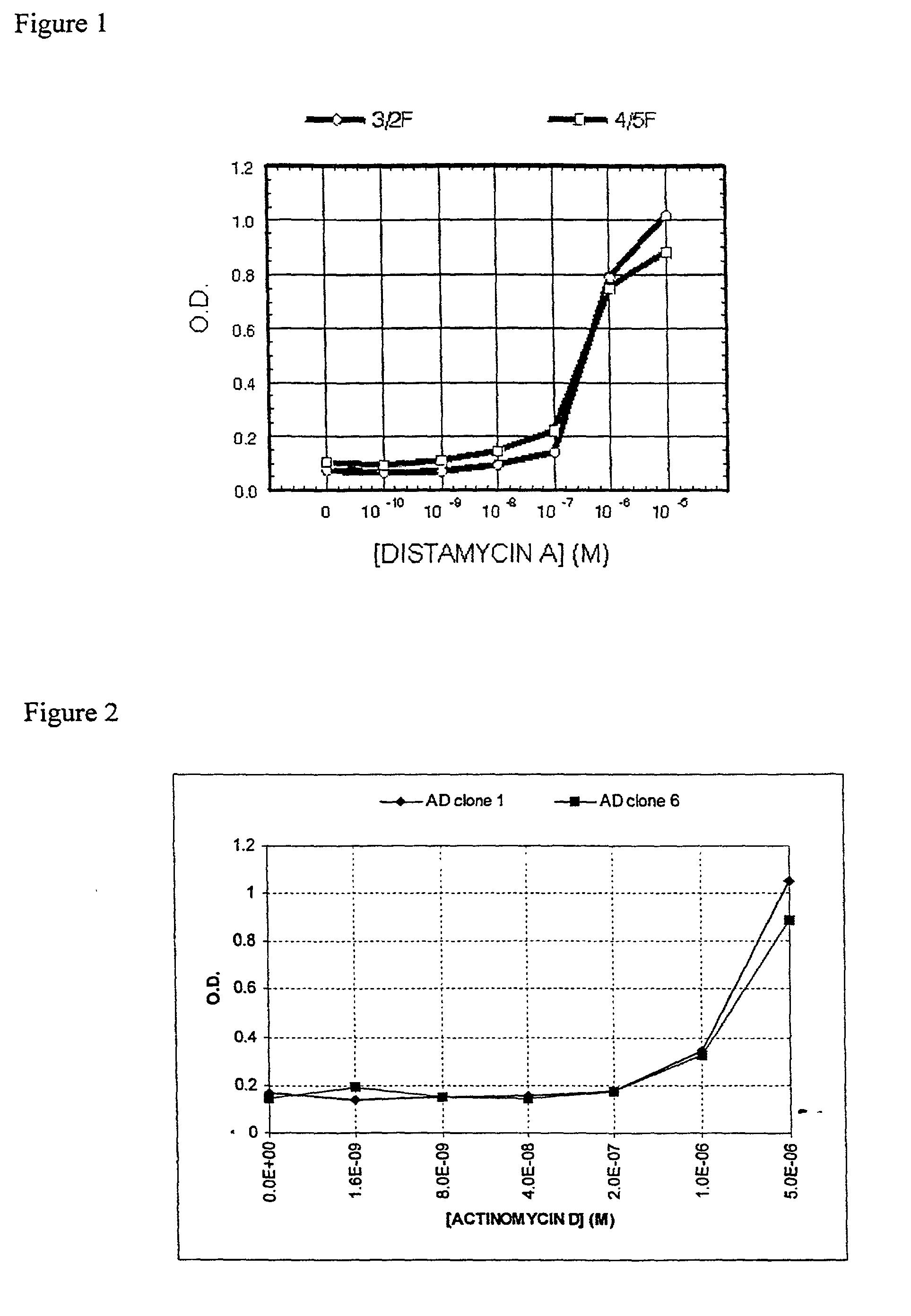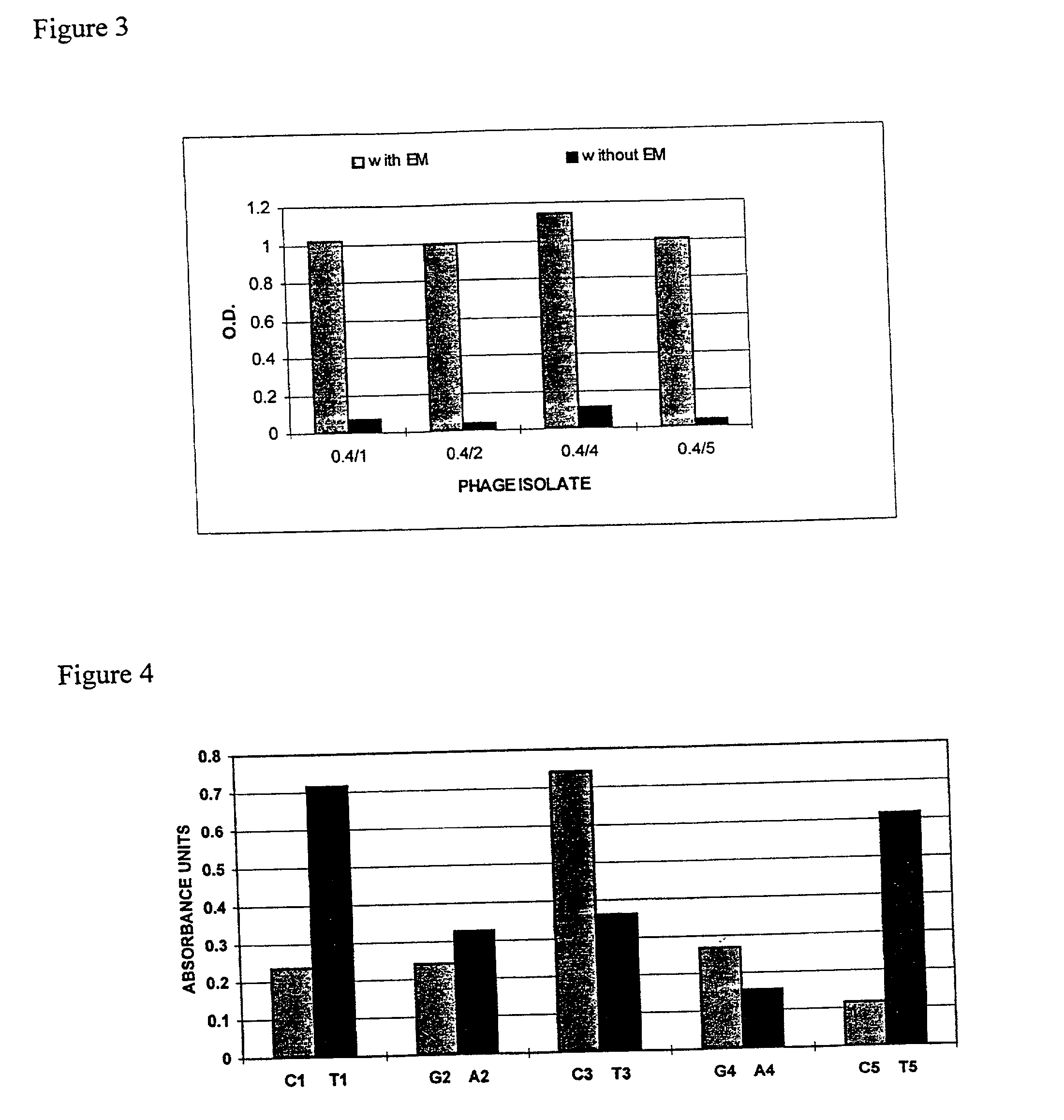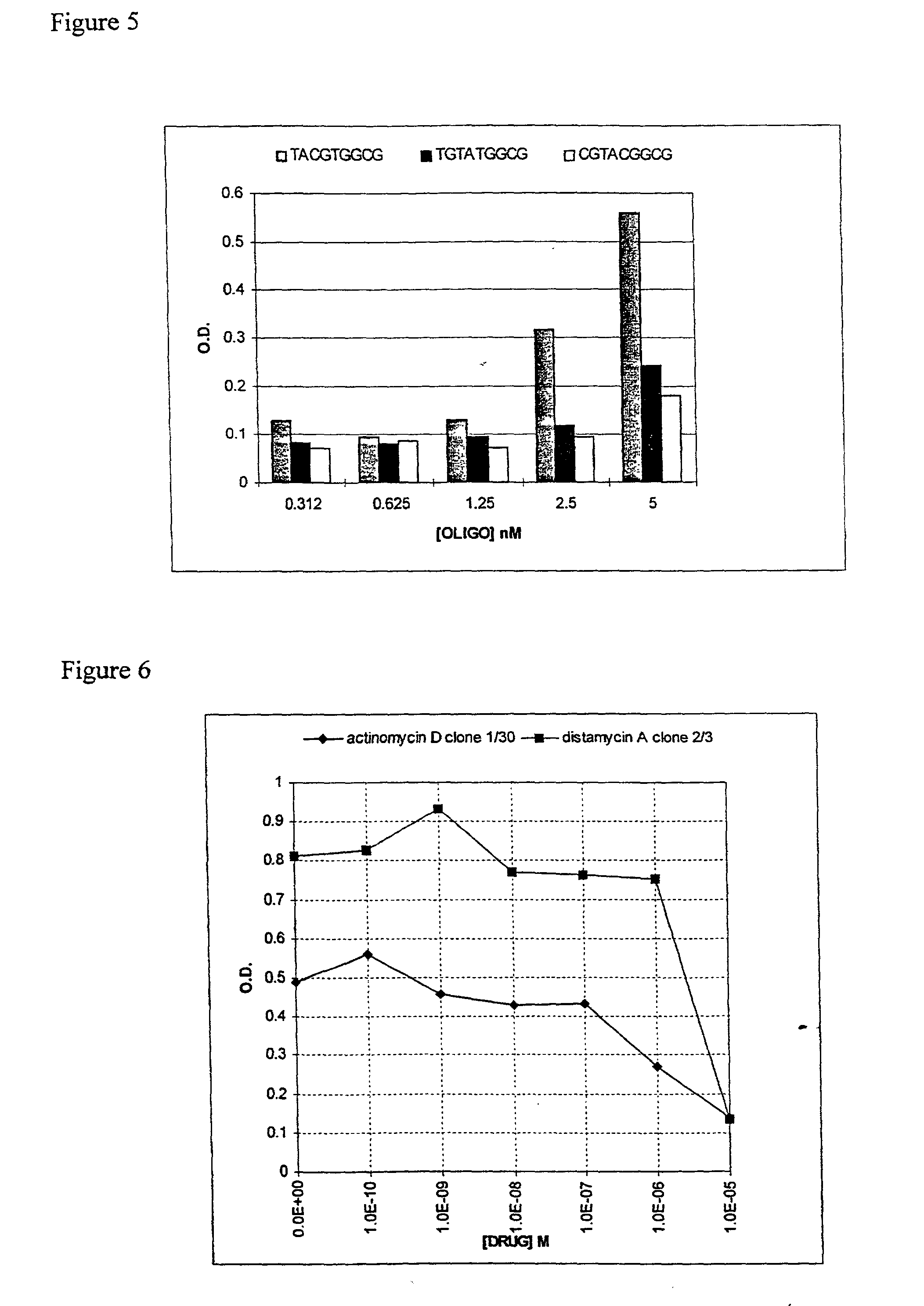Gene switches
a technology of switching molecules and switches, applied in the field of gene switches, can solve the problems of multiple switching molecules, modification may compromise the binding of prior art switching molecules to their polypeptide targets, and the protein-binding switching molecule will not have an effect on the expression of a gene,
- Summary
- Abstract
- Description
- Claims
- Application Information
AI Technical Summary
Problems solved by technology
Method used
Image
Examples
example 1
Preparation and Screening of a Zinc Finger Phage Display Library
[0356] Selection Of Zinc Finger Phage Binding DNA Targets In The Presence Of Small Molecules
[0357] Example 1.1 Selection of Zinc Finger Phage that Bind DNA In The Presence Of Distamycin A
[0358] A powerful method of selecting DNA binding proteins is the cloning of peptides (Smith (1985) Science 228, 1315-1317), or protein domains (McCafferty et al., (1990) Nature 348:552-554; Bass et al., (1990) Proteins 8:309-314), as fusions to the minor coat protein (pIII) of bacteriophage fd, which leads to their expression on the tip of the capsid. A phage display library is created comprising variants of the middle finger from the DNA binding domain of Zif268.
[0359] Materials And Methods
[0360] Construction And Cloning Of Genes.
[0361] In general, procedures and materials are in accordance with guidance given in Sambrook et al., Molecular Cloning. A Laboratory Manual, Cold Spring Harbor, 1989. The gene for the Zif268 fingers (residue...
example 2
Modulation Of Binding Of Polypeptides To Target DNA By DNA Binding Ligand
[0404] Individual phage clones are assayed for modulation of target DNA binding by ligand in a phage ELISA binding assay.
[0405] Binding assay reactions are carried out in wells of a streptavidin-coated microtitre plate (Boehringer Mannheim) as in Example 1, except that the distamycin concentration is varied while the DNA concentration is kept constant at 2 nM.
[0406] Induction of higher affinity DNA binding is observed when distamycin is added to the binding reaction at 10.sup.-6 M-10.sup.-7 M.
[0407] Binding of the zinc finger phage to DNA in the absence of ligand, or at ligand concentrations of 10.sup.-9 M or lower, results in phage retention close to background level, i.e. lower affinity binding than in the presence of ligand.
[0408] Background level affinity binding is defined as the phage retention in binding reactions that contain no DNA binding site.
example 3
DNA-Ligand Modulatable Restriction Enzyme
[0409] Phage-selected or rationally designed zinc finger domains which bind target DNA sequences in a manner modulatable by a DNA binding ligand can be converted to restriction enzymes which cleave DNA containing said target sequences in a manner modulatable by DNA binding ligand. This is achieved by coupling an appropriate zinc finger, as isolated in Example 1 above, to a cleavage domain of a restriction enzyme or other nucleic acid cleaving moiety.
[0410] A method of converting zinc finger DNA binding domains to chimaeric restriction endonucleases has been described in Kim, et al., (1996) Proc. Natl. Acad. Sci. USA 93:1156-1160. In order to demonstrate the applicability of DNA ligand-modulatable zinc fingers to restriction enzymes, a fusion is made between the catalytic domain of Fok I as described by Kim et al. and a zinc finger of Example 1. Fusion of the zinc finger nucleic acid-binding domain to the catalytic domain of Fok I restriction ...
PUM
| Property | Measurement | Unit |
|---|---|---|
| Affinity | aaaaa | aaaaa |
Abstract
Description
Claims
Application Information
 Login to View More
Login to View More - R&D
- Intellectual Property
- Life Sciences
- Materials
- Tech Scout
- Unparalleled Data Quality
- Higher Quality Content
- 60% Fewer Hallucinations
Browse by: Latest US Patents, China's latest patents, Technical Efficacy Thesaurus, Application Domain, Technology Topic, Popular Technical Reports.
© 2025 PatSnap. All rights reserved.Legal|Privacy policy|Modern Slavery Act Transparency Statement|Sitemap|About US| Contact US: help@patsnap.com



